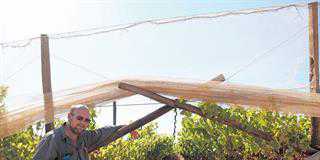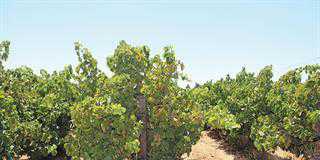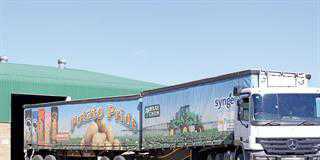The first of the Nohari family arrived in South Africa in 1874 as indentured labourers recruited in India to work on the sugar cane plantations.
Dipnarian Nohari of the second generation worked his way up to owning a farm and decided to supplement his farm labourers’ income by leasing plots of land for them to grow fresh produce to sell directly to the surrounding community and at the Durban fresh produce market.
Dipnarian’s customers clamoured for traditional Indian vegetables such as loofahs, bitter gourds, chillies, as well as the more traditional SA vegetables such as madumbis, calabash, green beans and tomatoes.
Despite this, by today’s standards his fresh produce business was small-scale and he had to compete with many other SA-Indians with the same idea to generate extra cash. However, to reduce transport costs to the fresh produce market, and in fine Indian tradition, these farmers were not averse to sharing the expenses of hiring a truck.
Keeping it in the family
During his lifetime, Dipnarian was blessed with one son and four grandsons.
These grandsons were Roy Nohari, Anil, Soncy and Danny. While the brothers were mere boys, their father, Bundhoo, worked as a truck driver for the then Creamline Dairies company. But in 1969, when Dipnarian fell ill, Bundhoo gave up his job to run his father’s 3ha fresh produce enterprise.
After school, the four boys helped their father on the farm and gained a good grounding in growing and marketing vegetables. At the same time, Bundhoo began leasing more land to increase his income from fresh produce.
After leaving school, Roy worked for Telkom for a while, Soncy studied to be a motor mechanic, and Anil and Danny carried on working with their father. But eventually the four brothers decided to go into the fresh produce business together and they formed Nohari Farms CC in 1991 that would become well known for top quality fresh produce.
“The four of us now own 20ha each, and we also lease additional land if we want to produce extra varieties or more of the same,” says Roy. Roy is Nohari Farms’ administrater and financial officer, and also plays a role in crop production and marketing. “Land is just too expensive for us to buy more.”
Crop rotation
While fresh produce is the Nohari brothers’ main focus, part of their land is also under sugar cane and 6ha is planted to litchi trees as an additional income.
The area under cane varies from year to year because the Noharis firmly believe in crop rotation. Barring the perennial sugar cane and litchis, all the fresh produce crops are rotated annually.
“We see a noticeable drop in quality if we don’t rotate,” Soncy explains. “We don’t have a set crop rotation system because of the changing market demand, but we do try and rotate nonlegumes with legumes where we can.”
The Nohari brothers find that rotating fresh produce with sugar cane also helps to break pest and disease cycles. The more common problems are aphids, looper worms, red spider mites, cutworms, locusts and Fusarium root rot. Roy points out that tomatoes and ginger plants are very susceptible to Fusarium root rot.
But besides crop rotation, they at times use chemicals to control these problems but not on the scale they would have if they were mono-cropping. The brothers rely on the advice of their local chemical adviser, Mike Taylor of Farmers’ Agri-Care, on what chemicals to use and how to apply them.
“We also try to vary the chemicals so that pests and diseases don’t build up a tolerance,” adds Roy. Anil and Danny are responsible for Nohari Farms’ land preparation, production and marketing.
Anil says that before they use a new chemical they conduct on-farm efficacy trials on a half-hectare plot. Based on the results of the new chemical against the primary chemical already being used, the brothers will decide whether or not to change.
Irrigation
Nohari Farms’ sugar cane crop is all rainfed, as are certain fresh produce crops on lands where there is no irrigation infrastructure.
The rest of the fresh produce receives overhead irrigation at a rate of about 10mm/week. Should there be rain before a scheduled irrigation, the brothers reduce the irrigation accordingly so that the crops still receive a total of around 10mm.
The Noharis try not to over-irrigate because overly moist soil promotes Fusarium root rot.
Fertiliser
Ahead of planting every year, the Nohari brothers submit soil samples from each land to the Cedara Agricultural Research Centre in KZN for testing.
Beforehand, they tell the centre what crop they intend planting and, based on the soil sample analyses of that land, Cedara’s soil scientists recommend the fertiliser and quantity for optimum production.
The main fertiliser used at planting is 2:3:4 (nitrogen:phosporus:potassium) at about 200kg/ha, varying according to the crop. For top-dressing, the brothers usually apply 1:0:1. All fertiliser is applied manually.
Labourers use measuring cans to know how much they’re applying in a seed furrow. To prevent fertiliser burn of the seed, once the fertiliser is in a furrow, a layer of about 2,5cm soil is applied over it and the seed placed onto this layer. The furrow is then covered with soil.
Depending on the crop, when the plants are about 15cm to 22cm tall they get a top-dressing of 50kg/ha to 100kg/ha fertiliser, applied manually. Crops that would be top-dressed include varieties of the bean family, calabash and loofahs.
“The majority of our fresh produce planting runs from September to November. Our soil tends to become acidic quickly, and also often needs nitrogen replenishment,” explains, Roy.
“We aim for a soil pH of around seven. Every seven to nine years or so, based on Cedara’s recommendations, we surface apply 5t to 8t dolomitic lime/ha on a rotational basis and then work it in with a plough and disc harrow.
“We will then plant fresh produce for about two years before planting cane that will stay in a land for about five to seven ratoons.”
Marketing and labour
The exact quantity of fresh produce and litchis produced and marketed in a given period is difficult to determine as weather, pests and diseases have a negative effect on the results.
However, according to Soncy who is responsible for maintenance and shares management, the sugar cane enterprise delivers 2 500t to 4 000t a year to the nearby Tongaat Sugar Mill.
Nohari Farms’ main harvesting and marketing period runs from February to October. “All of our fresh produce and fruit is harvested and packed the same day. It leaves for the Durban Farmers’ Retail Market at 1am the following day,” says Roy.
“We don’t do any valueadding. With our family having specialised in some of the traditional Indian vegetables and some of the South African vegetables that our ancestors produced, our clients now know who to come to when they’re looking for these.
“Our ginger and madumbis are the most popular so we grow a lot of them, and the other crops as the market demands. We don’t use market agents and we sell directly to supermarkets, independent retailers and housewives.”
Nohari Farms doesn’t employ a large permanent labour force, but instead hires seasonal workers for harvesting. The labour requirement peaks at around July every year when most of the fresh produce is ready for harvesting and packing.
However, with most of the work requiring manual labour, there is almost always a group of workers on the farm. On relatively level land, preparation for the fresh produce and a new cane land is done by tractor, plough and disc harrow. On the steep slopes, it is done by manual labour.
Challenges
“We tend to have the most crop losses on the lands where we can’t irrigate, because we have to add this to the effects of hail, wind, pests and diseases,” Roy says.
“On our more remote lands we have suffered losses due to theft. We’ve even had to hire security at additional cost to keep an eye on our lands but the guards can’t be everywhere at once, so we still have some theft.
“We lose about 10% of our fresh produce to theft and about another 10% due to environmental factors. But this is a vegetable farmer’s life. It takes just one short hail storm to destroy a crop.”
Soncy takes over, “We also struggle to compete with cheap imports, especially ginger from China. This sudden influx into our market pushes the prices right to the floor. “We spend a lot of time and money getting a good crop to harvest, and then these imports arrive. And we never know when they’re going to arrive. And because prices are determined by supply and demand, we can’t even raise ours to effectively cover our business’s risks.
“It also really bothers us that the people who steal our crops then sell them at our market at cheaper prices because they didn’t pay for them in the first place. They are competing against us with our own products!”
Another challenge raised by Danny is the price of seed. While the brothers propagate their own rootstocks for madumbis and ginger, they buy seed for their fresh produce crops from companies such as Agrotech and Starke Ayres.
Danny says that two years ago, lima bean seed cost about R50/kg. It is now around R120/kg. But the brothers say that a great help in cutting costs in their farming operation is that they all farm together and can do each other’s work if need be.
The brothers also have five sons between them who are in their twenties and also work at Nohari Farms, learning from their fathers how to run the business. All nine of the Nohari men keep a close eye on operations. This also contributes to cutting costs.
Roy points out that because of the high risk and tight margins of commercial fresh produce production nowadays, the Noharis have seen a dramatic decline in the number of farmers. He says that his family’s farming heritage has a sustainable future as they share their resources.
“In the 1970s and 1980s the Durban market had something like 1 500 producers. Now there are only about 300. Having close family ties and working well together are major reasons why Indian families have often become successful business operators,” says Roy.
“To take our business to even more sustainable levels we recently gained GlobalGAP certification. This means that we are certified producers of fresh produce that can be exported to even the strictest EU markets. We are not planning on exporting, but we are using the GlobalGAP production requirements to allow us to become even better fresh produce growers and marketers.”













